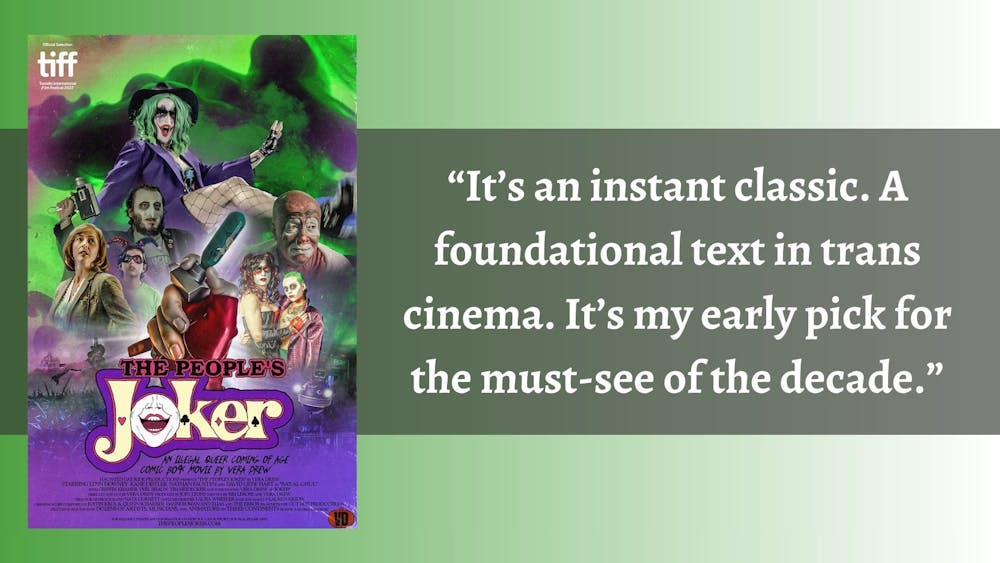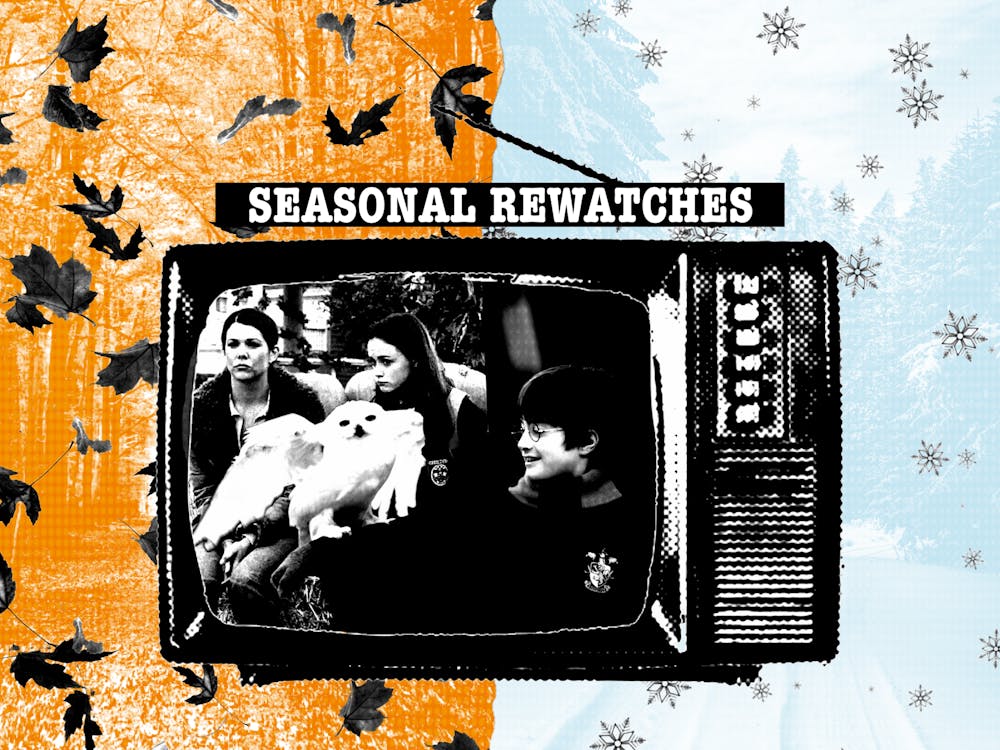I don’t often see myself represented in the movies.
Sometimes I’ll see a protagonist with the same passions that I have. Sometimes I’ll see love stories that remind me of my past relationships. But it’s rare to see transgender representation on the silver screen.
“The People’s Joker,” written, starring and directed by Vera Drew, is one of the few examples where I’ve felt truly seen. It’s a fair-use parody of “Joker” (2019) that couldn’t be more camp if it tried.
The film follows the otherwise unnamed main character in a coming-of-age story, following some of the events of “Joker” in that she seeks out a comedy career and calls herself Joker.
It took more than 18 months between its premiere at the Toronto International Film Festival before the film was released to theater audiences. I’d been hearing about it for quite some time, and knew from the moment I first learned of it that I needed to see it.
I drove all the way to Chicago to see “The People’s Joker” at the Music Box Theatre so I could attend the director’s Q&A. Besides being the best theater experience of my life, the film knocked my socks off in ways I previously didn’t know were possible.
In a sold-out theater, Drew’s film blew the roof off the place. Parodying both “Joker” and “Saturday Night Live,” “The People’s Joker” uses a creative litany of stylistic choices from basic green screens to Cameo videos from Robert Wuhl to various animated styles.
Drew has described the film as incredibly personal to her. It took years to fully develop and get released amid backlash from Warner Bros. Before we even hit the end credits, it became incredibly personal to me.
The film showcases the difficult experiences the protagonist had with her mother, an abusive relationship and a struggle to find herself. I’ve not had perfect parallels to every bullet the main character had to dodge, but Drew finds a way to weave it all together in a way that became relatable simply to my experience as transgender person.
I’ve seen movies with transgender characters. “Monkey Man” earlier in April prominently featured trans characters. Even “A Man Called Otto” had a trans character. Before “The People’s Joker,” I’d never seen such a comedy that perfectly showcases a trans experience on the big screen.
Through Drew’s own experiences with trans-ness, she builds a story that resonates with a trans audience. Sitting in the theater, I felt as though I were watching “The Rocky Horror Picture Show” the weekend it was released. It was transcendental. It was history only a few rows in front of my eyes.
It’s easy to feel lost with a non-conforming gender identity. It’s a struggle to find a community for that part of myself. Often, it’s easier to simply push it aside and focus on the other parts of me that make up who I am.
Enjoy what you're reading?
Signup for our newsletter
For the first time in a while, I felt safe. I felt at home. I felt comfortable. I was on the screen in my own way, different from any other time I’ve seen myself represented in a movie before.
“The People’s Joker” knows it will feel that way for trans viewers. It is clear in the subtext of the film that Drew knows it has at least some impact for at least some viewers. But it doesn’t become an overwhelming montage of “Here, folks, this is what trans is and why it should be OK!”
It’s a dramatic comedy that reminded me of any number of Adult Swim shows like “Smiling Friends” in its subversive hodgepodge of different elements. I laughed almost more than I found myself feeling seen.
There’s a moment when an animated Lorne Michaels (in a different animation style than almost any other moment in the film) gets stripped naked and falls down a flight of stairs. Robert Wuhl, an actor famous for his role as Alexander Knox in “Batman” (1989), appears in the film in a Cameo video that Drew acquired simply through the service and asking if he’d like to be in the film.
I’ve intentionally left out much of the plot of the film in this review. The story here is important. But, in the days following my first viewing of it, I’ve found myself thinking of “The People’s Joker” as a monumental step toward trans representation in media on the level it should be.
It’s a magnificent hour and a half filled with laughs that’ll knock that crap out of you. It’ll provide moments of introspection that trans people can relate to. It’ll confuse the hell out of you because — and I’m not the first to say this — it regularly looks like the film is being held together with Scotch tape, fishing line and Vera Drew’s two hands.
It’s a campy mess, but it’s messy in all the right ways. After four years in Oxford, struggling with my own gender performance and identity, it was exactly what I needed to re-engage with my love and passion for this side of myself.
“The People’s Joker” is a comedic masterpiece that is not — and I cannot stress this enough — for everyone. But for me and, judging by the crowd’s cheers, many other people who have yearned for genuine trans representation to make it to the theaters, it was damn good.
It’s an instant classic. A foundational text in trans cinema. It’s my early pick for the must-see of the decade. Well, when it can finally be distributed to the masses (I’m talking to you, Warner Bros. lawyers).
Rating: 9/10




